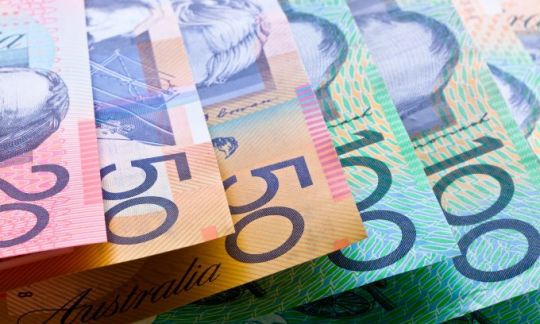What does Labor’s election win mean for your money?

Labor has won the 2022 federal election, with Anthony Albanese sworn in as the 31st Prime Minister of Australia. Here’s what it could mean for your money.
Labor has promised to deliver on a number of issues, including housing, child care costs, health care and electric vehicles. The new federal Budget will be delivered in October, but here’s what we know so far about what the election result could mean in key areas for people’s finances.
Wages
Anthony Albanese has backed a 5.1% increase to the minimum wage, currently $20.33 an hour.
During the election campaign, Mr Albanese said Labor would take a submission to the Fair Work Commission urging it to ensure wages at least keep up with the cost of living. Scott Morrison criticised this pledge at the time, but the 5.1% figure has been chosen because this matches Australia’s annual inflation rate, based on the latest data from the Australian Bureau of Statistics (ABS).
“A 5.1% increase does put people in a position where they can say the increase in my shopping basket and filling up at the pump is actually covered now with pay increases,” Canstar finance expert Steve Mickenbecker said.
“That’s a positive for families out there who are struggling to pay the bills.”
Housing
Labor will introduce a Help to Buy “shared equity” scheme, which will see the government contribute up to 40% of the purchase price for new homes and up to 30% for existing homes. Home owners can then buy that equity off the government during their home loan period.
“The good thing about the scheme is that the loan will actually be lower,” Mr Mickenbecker said.
“The government takes up to 30% or 40% of the house, and it means that people will have significantly lower mortgages.”
But the scheme will only be open to 10,000 Australians per year, Mr Mickenbecker notes, so it is “a bit of a drop in the bucket”.
Labor will also create a regional first home buyer scheme, which will help 10,000 first home buyers a year purchase a home with a deposit as low as 5%. The government will guarantee up to 15% of the purchase price, so buyers will not need to pay lenders mortgage insurance.
It will also create a Housing Australia Future Fund, which “will build 30,000 new social and affordable housing properties” in its first five years.
The comparison rate for all home loans and loans secured against real property are based on secured credit of $150,000 and a term of 25 years.
^WARNING: This comparison rate is true only for the examples given and may not include all fees and charges. Different terms, fees or other loan amounts might result in a different comparison rate.

Up to $4,000 when you take out a IMB home loan. Minimum loan amounts and LVR restrictions apply. Offer available until further notice. See provider website for full details. Exclusions, terms and conditions apply.
 Owner occupied
Owner occupied
 20% min deposit
20% min deposit
 Redraw facility
Redraw facility
 Owner occupied
Owner occupied
 10% min deposit
10% min deposit
 Redraw facility
Redraw facility
 Owner occupied
Owner occupied
 50% min deposit
50% min deposit
 Redraw facility
Redraw facility
 Owner occupied
Owner occupied
 20% min deposit
20% min deposit
 Redraw facility
Redraw facility
 Owner occupied
Owner occupied
 30% min deposit
30% min deposit
 Redraw facility
Redraw facility
 Owner occupied
Owner occupied
 30% min deposit
30% min deposit
 Redraw facility
Redraw facility
Canstar may earn a fee for referrals from its website tables, and from Sponsorship or Promotion of certain products. Fees payable by product providers for referrals and Sponsorship or Promotion may vary between providers, website position, and revenue model. Sponsorship or Promotion fees may be higher than referral fees. Sponsored or Promoted products are clearly disclosed as such on website pages. They may appear in a number of areas of the website such as in comparison tables, on hub pages and in articles. Sponsored or Promoted products may be displayed in a fixed position in a table, regardless of the product’s rating, price or other attributes. The table position of a Sponsored or Promoted product does not indicate any ranking or rating by Canstar. For more information please see How We Get Paid.
Taxes
Labor has agreed to keep the Coalition’s ‘stage three’ tax cuts that were legislated in 2019. From 1 July 2024, this will see everyone earning between $45,000 and $200,000 per year pay the same 30% marginal tax rate.
“This will be particularly effective for higher income earners, with gains of $1,125 per year for an individual on $90,000, rising to $9,075 per year for a person on $200,000 or more,” Mark Chapman, Director of Tax Communications at H&R Block said.
The abolition of the Low and Middle Income Tax Offset (LMITO) is also locked in, as this measure was not extended as part of former Treasurer Josh Frydenberg’s 2022 federal Budget. The current 2021-2022 financial year will be its final year, meaning those who currently receive it will effectively get a tax rise when they submit their returns in 2023.
“This could be a rise of up to $1,500 for those entitled to the full LMITO,” Mr Chapman said.
“There are no announced proposals for the Labor party to reverse Frydenberg’s decision [to abolish the LMITO].”
Child care subsidies
Labor has promised to lift the maximum child care subsidy rate to 90% and increase the income threshold to include families earning less than $530,000, up from the current $354,305.
Labor has also committed to keeping higher child care subsidy rates for second and additional children in care, and to extending the increased subsidy to outside school hours care.
Health care costs
Labor says it will reduce the cost of medicines on the pharmaceutical benefits scheme (PBS) by $12.50, compared to the former Coalition government’s election promise of $10. This change will reduce the PBS co-payment from a current maximum cost of $42.50 per script, to a maximum of $30 per script.
It has also promised at least 50 Medicare Urgent Care Clinics, designed to take the pressure off emergency departments. The clinics will be based in existing GP clinics and Community Health Centres and they will bulk-bill, meaning there will be no out-of-pocket costs for Australian citizens and permanent residents.
Eligibility for the Commonwealth Seniors Health Card will also be widened. Labor will match the Coalition’s plan to increase the singles income threshold from about $58,000 to $90,000 from 1 July 2022. The couples threshold will increase from about $92,000 to $144,000.
Electric vehicles
Labor has said it will make purchasing an electric vehicle cheaper. Its Electric Car Discount will exempt many electric cars from import tariffs (a 5% tax on some imported electric cars) and fringe benefits tax (a 47% tax on electric cars that are provided through work for private use).
The Electric Vehicle Council estimates that a $50,000 model would be $2,000 cheaper as a result of removing the import tariff. If the car is provided through employment arrangements, it could be $9,000 cheaper as a result of the fringe benefits tax exemption.
“The issue is that electric cars are relatively more expensive compared to internal combustion engines,” Mr Mickenbecker said.
“Labor’s incentive is potentially enough to remove the dis-incentive Australians have to go electric, and it’s a positive step in that direction.”
Superannuation
The age for making downsizing contributions to superannuation will be lowered. Labor has agreed to match the Coalition’s proposal, which will see Australians over the age of 55 able to invest up to $300,000 into their superannuation from the sale of their home. The current age limit is 65, but that was already set to drop to 60 from 1 July 2022.
Cover image source: Gordon Bell/Shutterstock.com.
This article was reviewed by our Sub Editor Tom Letts and Deputy Editor Sean Callery before it was updated, as part of our fact-checking process.

The comparison rate for all home loans and loans secured against real property are based on secured credit of $150,000 and a term of 25 years.
^WARNING: This comparison rate is true only for the examples given and may not include all fees and charges. Different terms, fees or other loan amounts might result in a different comparison rate.
 Owner occupied
Owner occupied
 10% min deposit
10% min deposit
 Redraw facility
Redraw facility
Try our Home Loans comparison tool to instantly compare Canstar expert rated options.
The comparison rate for all home loans and loans secured against real property are based on secured credit of $150,000 and a term of 25 years.
^WARNING: This comparison rate is true only for the examples given and may not include all fees and charges. Different terms, fees or other loan amounts might result in a different comparison rate.





